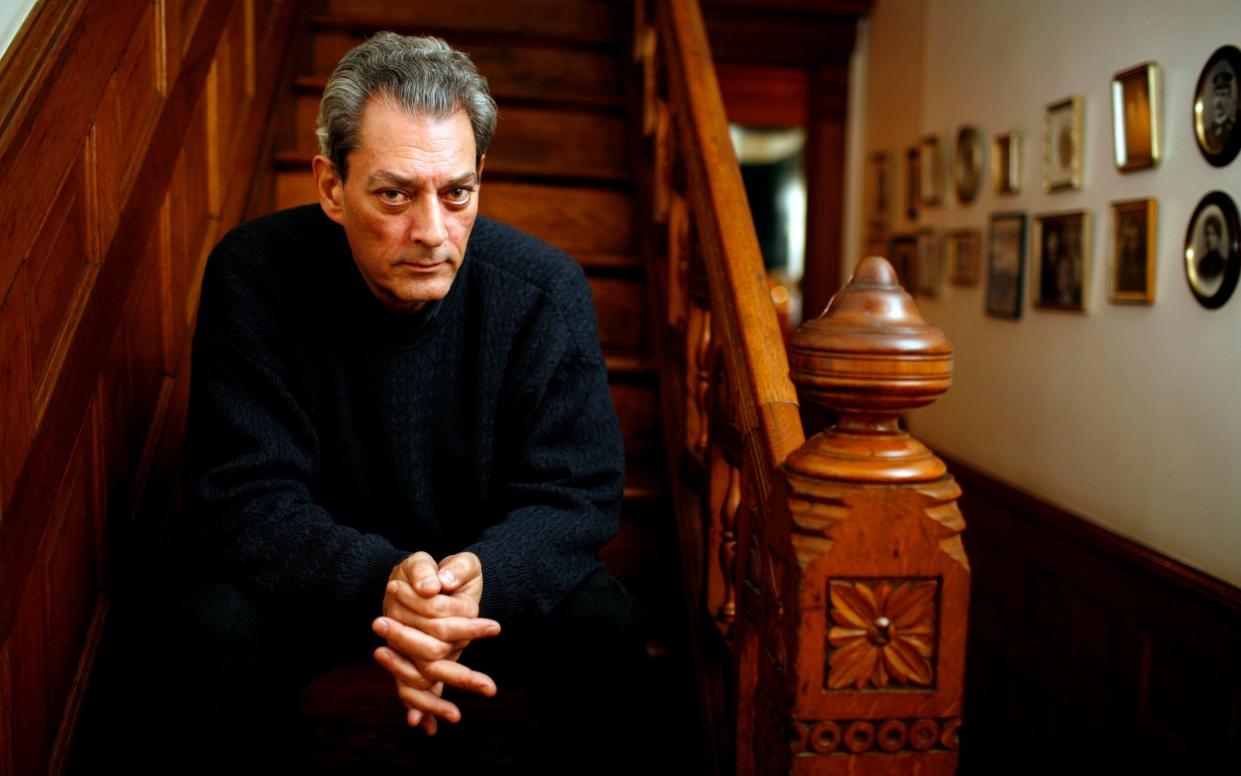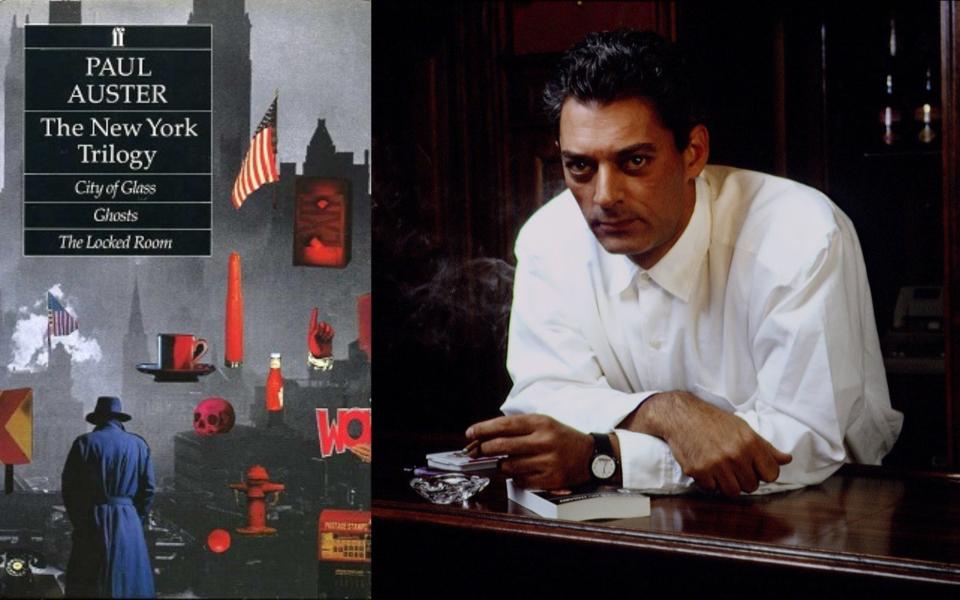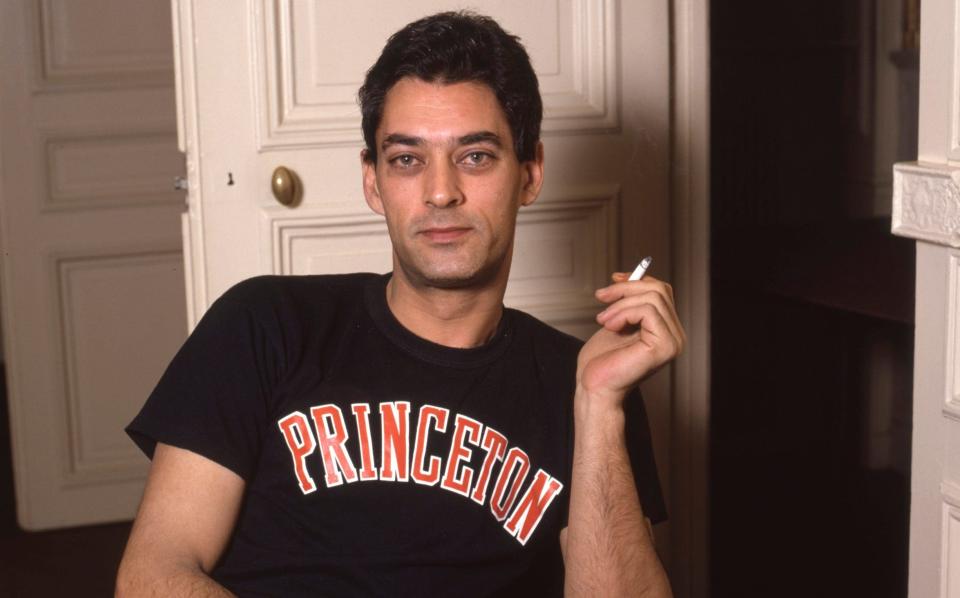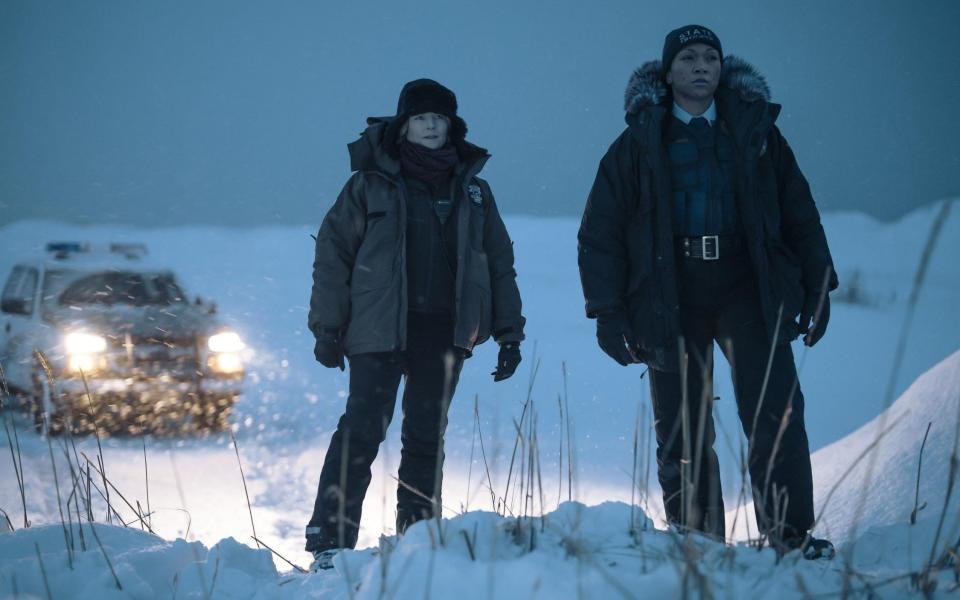Paul Auster made crime fiction clever – without him there would be no True Detective

- Oops!Something went wrong.Please try again later.
You can probably count on the fingers of one hand the number of truly innovative works of crime fiction since Edgar Allan Poe: and one of them is The New York Trilogy by Paul Auster, whose death was announced today. Like many books that do something new, the big publishers did not welcome it with open arms, as Auster recalled when I interviewed him in 2022.
“[It] was rejected by 17 publishers: doors weren’t opening and people saying, ‘welcome in, we love your crazy books’. No, I wound up having a very, very small publisher to start with.” He seemed to regard this as a badge of honour, pointing out to me that Samuel Beckett’s first novel had also been rejected, no fewer than 36 times.
As it turned out, The New York Trilogy was a huge success: not on the scale of an Agatha Christie or a Robert Ludlum in terms of sales, but proving a hit with a younger demographic not terribly interested in crime fiction. Detective fiction has always been popular: Auster made it cool. In fact he was so popular with hard-up intellectuals that the Union Square branch of Barnes & Noble had to keep his books locked in the basement because they were stolen so frequently. (“You had to ask [for them]. I was sort of flattered,” Auster told me).
But although the Mystery Writers of America nominated the first part of the New York Trilogy for an Edgar award, Auster insisted that the work was something very different from traditional crime fiction. “I’m using the genre in the way, say, that Cervantes used chivalric romance for other purposes, or the way that Beckett used vaudeville for Waiting for Godot,” he once said.
The trilogy comprises three novellas, first published separately in 1985 and 1986: City of Glass, Ghosts and The Locked Room. (They were first issued in one volume under the title The New York Trilogy in the UK in 1987). The novellas were the 37-year-old Auster’s first attempt at a sustained work of fiction following a long and ultimately thwarted attempt to make his name as a poet. (He had, however, won considerable critical acclaim for his 1982 memoir-cum-book of philosophical reflections, The Invention of Solitude).

As he told it, a real-life incident sparked the conception of City of Glass. One day he received a telephone call at his apartment from a man asking to speak to somebody at the Pinkerton detective agency; Auster told him he had the wrong number, but he nevertheless rang a second time and had to be told he’d made the same mistake. Auster then conceived a wild plan: if he received a third call, he would pose as a Pinkerton agent and inquire into the caller’s problem.
No third call came, but Auster then devised a story about Quinn, a writer of detective novels under the pen-name William Wilson (an allusion to Poe’s short story about a man of that name who is haunted by his doppelganger), who is rung up by a man asking to speak to someone called Paul Auster of the Auster detective agency. Quinn decides to take on the caller’s case and is launched into a parody of the detective story, full of surreal moments (after tailing a suspect who paces through New York’s streets endlessly for seemingly no reason, Quinn consults a map and realises that his route spells out a message: THE TOWER OF BABEL). The story culminates in Quinn meeting the real Paul Auster – a writer who is unconnected to any detective agency.
Novels in which writers appeared as characters were in vogue (City of Glass came out shortly after Martin Amis had played a starring role in his own Money) but it was something new in crime fiction. City of Glass was not the first postmodernist crime story – Umberto Eco’s The Name of the Rose (1980) constantly winked and nudged at its readers with allusions to its own status as part of a tradition of genre fiction – but it was the first to truly upend the form of the genre, with its acknowledgement that some mysteries are not just insoluble but indefinable. Stories that had a logical beginning, middle and end were not just unlifelike, Auster averred; they offered an easy, and ultimately false, comfort which was no substitute for the power of the unfathomable. “It is the inexplicable that seems to contain great meaning. It is impossible to pinpoint, so it reverberates.”
The remaining two novellas in the trilogy are equally surreal: Ghosts features a private eye called Blue hired by a man named White to take a room in Orange Street and keep a man called Black under surveillance, though Blue never really understands why: “The real problem boils down to identifying the nature of the problem”, we are told, and the answer is not vouchsafed. The Locked Room dismantles one of the hoariest sub-genres of crime fiction in an equally mystifying way.

The New York Trilogy was a great critical success, particularly in Europe, where his work was compared to that of Alain Robbe-Grillet and Marguerite Duras: he was described as “America’s foremost French novelist” and admirers would make long pilgrimages from France to see him: “The first thing you hear as you approach an Auster reading, anywhere in the world, is French,” New York magazine once observed.
There were some dissenters among the largely rapturous Anglophone critics, however. Julian Symons, doyen of British crime critics, deprecated the “chorus of reviewing praise [that] greeted this clever, sterile book”. As he put it in his history of crime fiction, Bloody Murder: “Auster is truly fascinated by the mechanics of the crime story, its simultaneous representation and denial of literal reality … but … in a self-congratulatory way that is deeply disagreeable. See how easy this stuff is to write, Auster says implicitly, and see how silly it is. I could do it standing on my head: better still, I’ll stand the private eye story on its head to show its pointlessness.”
There is a hilarious edition of the radio discussion show A Good Read in which Kingsley Amis and Ruth Rendell argue over Auster: Rendell calls him “a new Kafka, and more readable than Kafka” while Amis denounces him as unreadable. It is no surprise that Rendell loved Auster’s work, not least because he shared her obsession with coincidence. Auster insisted that his books were full of coincidences because life was: people who thought they were unrealistic “have read too many books and it influences the way they look at reality”.
“Whether it might have turned out differently, or whether it was all predetermined … is not the question. The question is the story itself, and whether or not it means something is not for the story to tell” is one of the most famous quotations from The New York Trilogy. Yet when I spoke to Auster he was keen to point out that many of his other books do have distinct morals and messages.

“For example, my novel Man in the Dark [2008] has a whole long section about a civil war in the United States caused by the 2000 election, which was stolen by the Republican hacks in the Supreme Court. It was so outrageous that Bush became President, I didn’t understand why there wasn’t more anger about it.” His aim, he said, had always been to write as wide a variety of books as possible. “Life’s too big for me to want to do the same thing over and over. I don’t want to be like one of those painters who does four stripes on the canvas every time, and then the big career-changing move is when they give up orange and start using yellow.”
And yet it will be his less easily summarisable works of fiction that endure, I suspect, and none more so than his first. One can see his self-conscious take on the detective story influencing a huge number of writers who came after him, from Michael Chabon to Jonathan Lethem, as well as such offbeat television crime series as True Detective and Bored To Death – shows that ape the rhythms of conventional mystery stories but are unafraid of introducing elements of the surreal and constantly making sly references to their own fictiveness and taking pleasure in playing with the cliches of the genre.
Auster became a little embarrassed in later life about being associated with the downmarket crime genre, rather desperately insisting, in his 2017 memoir A Life in Words, that Crime and Punishment could be classed as a crime novel. “Most writers are perfectly satisfied with traditional literary models and happy to produce works they feel are beautiful and true and good,” he noted in the same book. “I’ve always wanted to write what to me is beautiful, true, and good, but I’m also interested in inventing new ways to tell stories. I wanted to turn everything inside out.” That act of turning the crime genre topsy-turvy yielded, paradoxically, one of its greatest examples.

